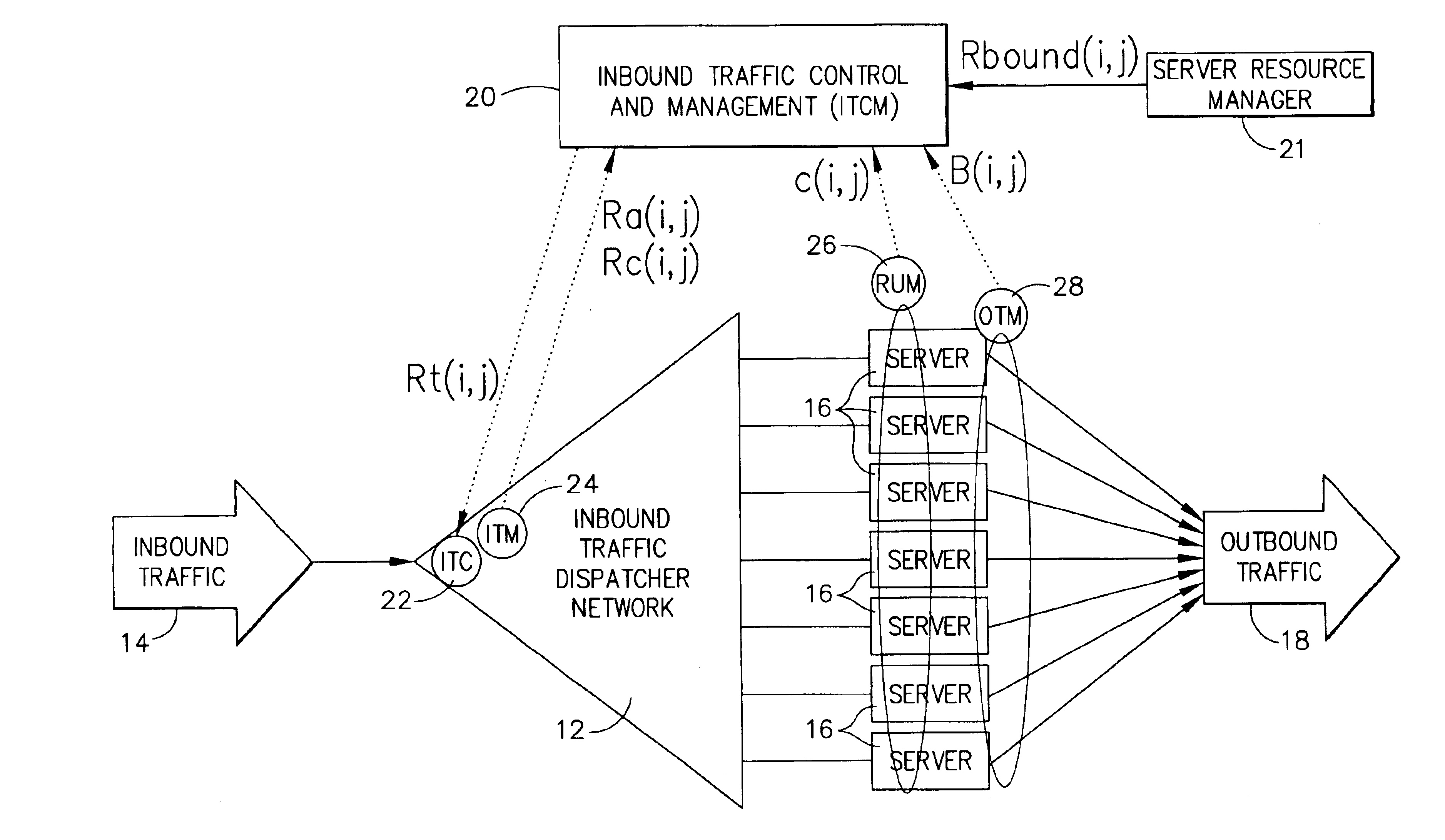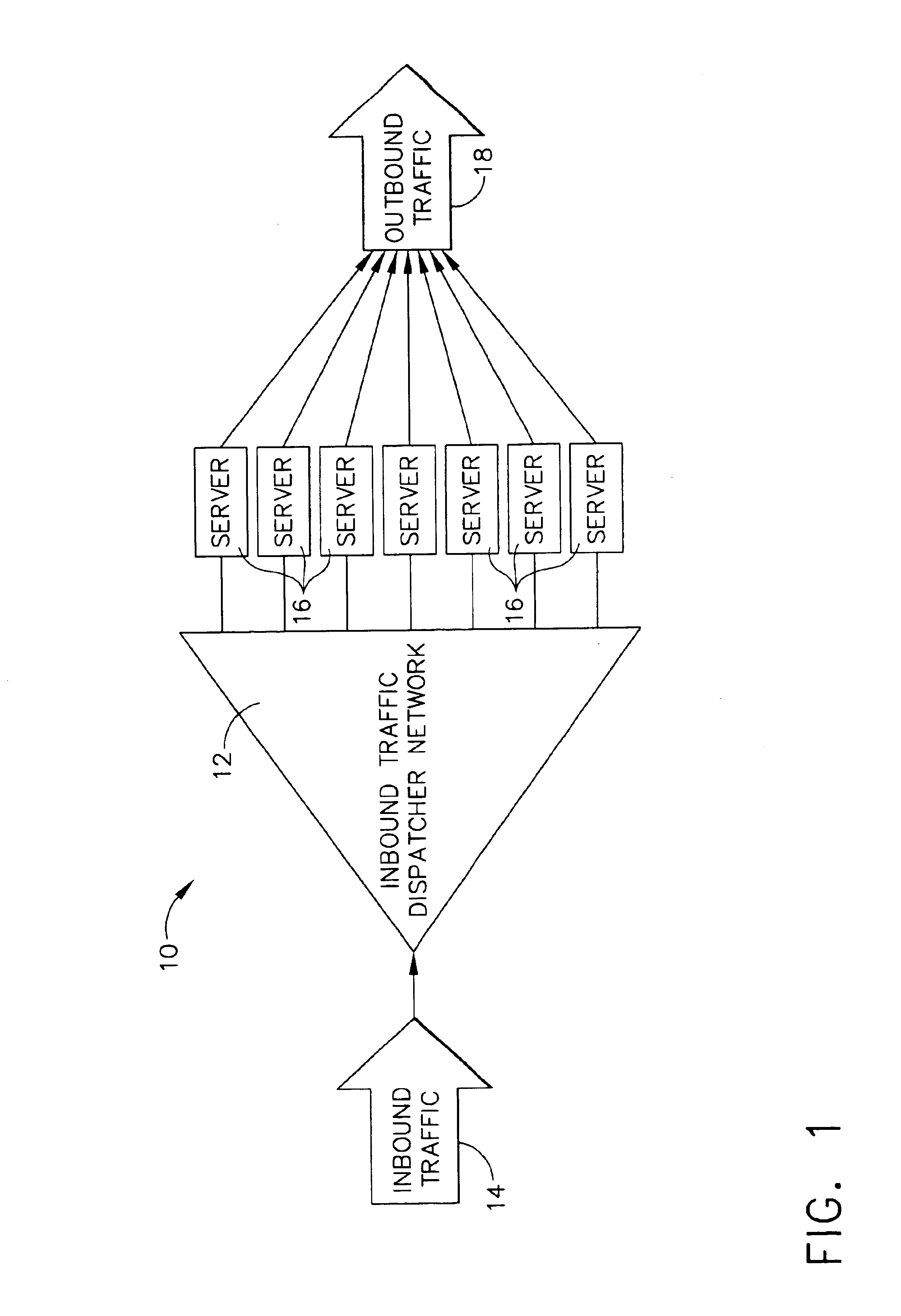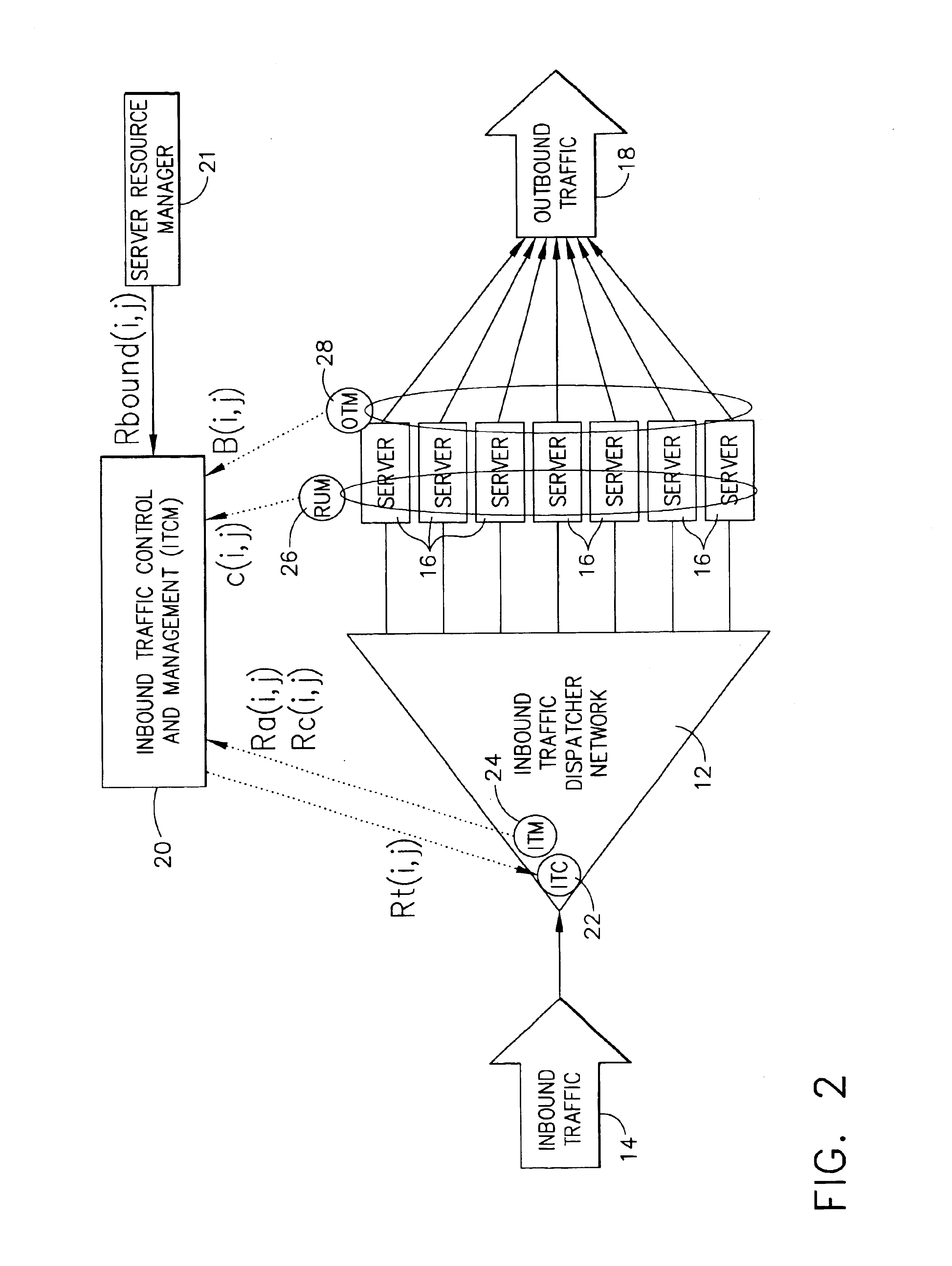Highly scalable system and method of regulating internet traffic to server farm to support (min,max) bandwidth usage-based service level agreements
a technology of server farm and bandwidth, applied in the direction of digital transmission, data switching network, instruments, etc., can solve the problems of unsatisfactory customer acquisition of bandwidth, undesirable performance instability, further congestion and packet dropping, etc., to achieve high scalability, avoid generation of output from server farm, and high scalability
- Summary
- Abstract
- Description
- Claims
- Application Information
AI Technical Summary
Benefits of technology
Problems solved by technology
Method used
Image
Examples
Embodiment Construction
FIG. 1 schematically represents a system environment in which traffic through an Internet server farm 10 can be regulated with a bandwidth control system in accordance with the present invention. The Internet server farm 10 is represented as being comprised of an inbound traffic (or TCP connection request) dispatching network 12 that dispatches inbound traffic 14 to appropriate servers 16. The invention is intended for use with a very large number of servers 16 (the size beyond the capacity of a single dispatcher unit) of potentially different capacities that create the outbound traffic 18 of the server farm 10. An objective of this invention is to provide a highly scalable system and method that manages the outbound bandwidth usage of various customers (and thus customer traffic) subject to (min,max) bandwidth-based service level agreements (SLAs) by regulating the inbound traffic 14 of various customers. Table 1 contains a summary of symbols and notations used throughout the follo...
PUM
 Login to View More
Login to View More Abstract
Description
Claims
Application Information
 Login to View More
Login to View More - R&D
- Intellectual Property
- Life Sciences
- Materials
- Tech Scout
- Unparalleled Data Quality
- Higher Quality Content
- 60% Fewer Hallucinations
Browse by: Latest US Patents, China's latest patents, Technical Efficacy Thesaurus, Application Domain, Technology Topic, Popular Technical Reports.
© 2025 PatSnap. All rights reserved.Legal|Privacy policy|Modern Slavery Act Transparency Statement|Sitemap|About US| Contact US: help@patsnap.com



